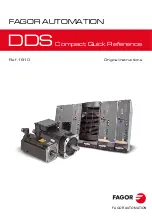
Goodrive350A series high-performance multifunction VFD
Optional peripheral accessories
-401-
Ensure that the voltage class of the VFD is consistent with that of the grid.
D.4 Cables
D.4.1 Power cables
The sizes of the input power cables and motor cables must meet the local regulation.
•
The input power cables and motor cables must be able to carry the corresponding load currents.
•
The maximum temperature margin of the motor cables in continuous operation cannot be lower
than 70°C.
•
The conductivity of the PE grounding conductor is the same as that of the phase conductor, that
is, the cross-sectional areas are the same.
•
For details about the EMC requirements, see Appendix B Technical data
To meet the EMC requirements stipulated in the CE standards, you must use symmetrical shielded
cables as motor cables (as shown in the following figure).
Four-core cables can be used as input cables, but symmetrical shielded cables are recommended.
Compared with four-core cables, symmetrical shielded cables can reduce electromagnetic radiation
as well as the current and loss of the motor cables.
Shield layer
Jacket
Insulator
Conductor
PE
PE conductor and
shield layer
Jacket
Insulator
Conductor
Jacket
Insulator
Conductor
PE
Symmetrical shielded cable
Four-core cable
-
Note:
If the conductivity of the shield layer of the motor cables cannot meet the requirements,
separate PE conductors must be used.
To protect the conductors, the cross-sectional area of the shielded cables must be the same as that of
the phase conductors if the cable and conductor are made of materials of the same type. This
reduces grounding resistance, and thus improves impedance continuity.
To effectively restrict the emission and conduction of radio frequency (RF) interference, the
conductivity of the shielded cable must at least be 1/10 of the conductivity of the phase conductor.
This requirement can be well met by a copper or aluminum shield layer. The following figure shows
the minimum requirement on motor cables of a VFD. The cable must consist of a layer of
spiral-shaped copper strips. The denser the shield layer is, the more effectively the electromagnetic
interference is restricted.
















































